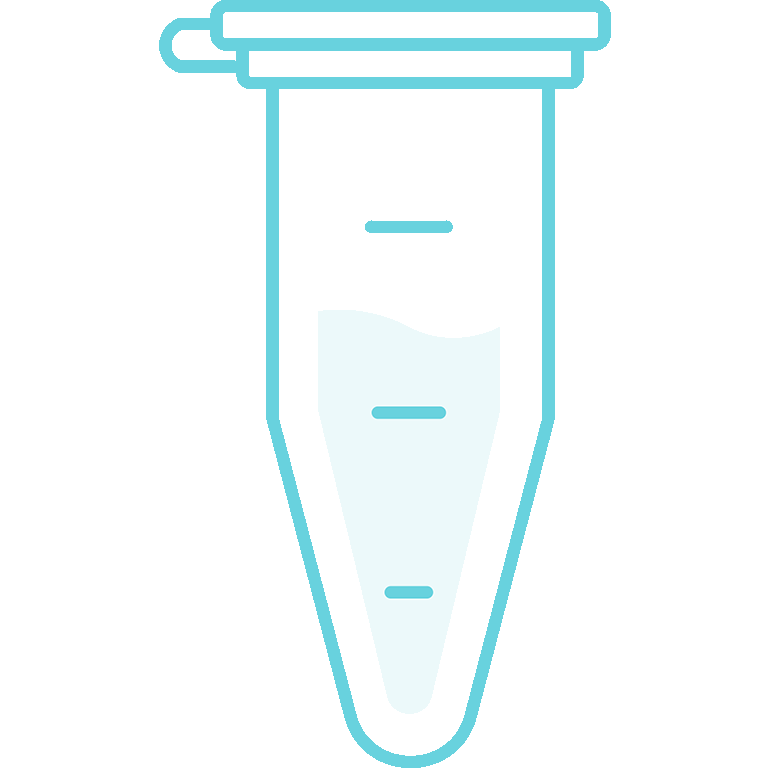Amino acid analysis for protein quantification
Early and accurate protein quantification is essential in drug development since other critical assays, including other quantitative analyses, depend on knowing your drug sample's precise total protein concentration. If the concentration determination of your protein standard is incorrect, it will affect your downstream process development and may cause severe delays or even drug candidate failure.
The amino acid analysis is the golden standard for accurately quantifying proteins and peptides according to ICH Q6B guidelines. Therefore, we recommend using it for purified proteins or peptides with known amino acid sequences, complex samples with mixtures of proteins, and protein stock solutions.
Robust amino acid analysis and protein quantification
Determine absolute amount of individual or total amino acids
Amino acid analysis provides highly accurate protein amount and concentration. Compare with the known protein sequence for molar amount
Determine the extinction coefficient
UV measurements combined with amino acid analysis experimentally determine the mass- and molar extinction coefficient of the protein in a given buffer
Determine accurate amount in protein stock solution
Using triplicate measurements and the known amino acid composition of your purified protein, we can determine the exact amount and concentration of the protein stock solution
It is advisable to determine the protein concentration of your sample by amino acid analysis before conducting other quantitative analyses, such as residual HCP quantification or peptide and intact mass analyses. The data ensures the appropriate sample volume and protein amount calculations for protein digestion and mass spectrometry-based workflow preparation. If the protein concentration has been incorrectly measured, the analysis may fail or the results may be less accurate.
The amino acid analysis is the golden standard for accurately quantifying the specific amount of purified proteins and peptides and also for determining the overall protein concentration in complex protein samples. The analysis provides quantitative data for all amino acids except tryptophan and cysteine, which degrade into free amino acids during hydrolysis. The samples can even be run in triplicate for highly accurate quantification.
Traditional protein quantification assays, such as Bradford, Lowry, or BCA, depend on an external reference standard and calibration curve and are prone to interference from chemicals or the presence of other proteins. Furthermore, your purified protein may have a different UV absorption coefficient than the employed calibration standard. Such cases will result in an incorrect concentration determination of the protein standard, which may significantly impact your assay and downstream process development.
Triplicate amino acid analysis (AAA) is the gold standard for protein concentration determination. Generally, it ensures the most accurate quantification of your protein standard, even when the concentration is unknown. The analysis is based on acidic hydrolysis followed by Ion-Exchange HPLC detection and quantifying individual amino acids. The analysis works even with presence of salt and certain detergents.
Knowing the molar extinction coefficient of your purified protein or antibody sample is necessary for accurate protein quantification by UV absorbance and is also required by the ICH Q6B guidelines. The extinction coefficient enables the determination of protein concentrations in laboratory samples using spectrophotometry.
The analysis is a three-step procedure of measuring the exact protein concentration, determining its UV absorbance, and calculating the extinction coefficient using the Beer-Lambert Law. The protein or antibody should be dissolved in the same buffer for subsequent experiments since the molar extinction coefficient depends on the protein's buffer composition and three-dimensional structure.
The method usually requires access to an amino acid analyzer and a spectrophotometer. Alphalyse uses an advanced SoloVPE system with variable-path length measurement, which can identify the linear range of absorbance and allows the calculation of the sample concentration and extinction coefficient using a slope spectroscopy equation derived from the Beer–Lambert Law.
Typical project process
You typically work with
these experts:



Project scope
We will start with an online meeting to learn more about your project. Based on your needs, you will receive a draft proposal outlining the suggested analyses and expected timeframe.
Samples
After signing the final project proposal, we will contact you for details about your samples. An estimated report delivery date will be sent as soon as we receive your samples.
Execution
A project leader will oversee the project and send you status updates by email regularly.
A typical analysis includes:
Protein quantification / amino acid analysis:
- Single, duplicate, or triplicate amino acid assay. We recommend analysis in triplicates whenever you need a very accurate protein concentration determination.
- We can compare the results against a known sequence and perform the analysis when the sequence is unknown or for protein mixtures.
Molar extinction coefficient
- Evaluate if the buffer effect the analysis – if yes, the buffer absorbance is subtracted.
- Determination of mass extinction coefficient at absorbance 280 nm (unless another wavelength is desired).
- Accurate calculation of the molar extinction coefficient of your protein/antibody based on the molecular weight.
Results
A standard report is sent to you by email and includes:
Protein quantification / amino acid analysis
- Quantification of 18 amino acids and the total protein content.
Molar extinction coefficient
- The mass and molar extinction coefficient at wavelength 280 nm (unless another wavelength is desired).
Follow up
Upon completion of the project, your team is invited to go over the protein quantification results at an online meeting.
Curious to know more about protein quantification?

Whatever challenge or question you may have, be it related to protein quantification or something else, we are here to help you solve it. One of our protein analysis experts will discuss the best analysis approach or method for your project by email or online meeting – without obligation.
Client stories
Video: GMP-validated HCP analysis based on LC-MS
Video: Analyzing unexplainable HPLC peaks or shoulders
Stability study – an important part of biologics license application
Characterization program for therapeutic mAbs
High-throughput antibody characterization service
Optimized HPLC analysis of peptides for clinical trials
Benefits of amino acid analysis and extinction coefficient analysis
Compare the measured amino acid composition with the expected composition calculated from the protein sequence.
Accurate quantification of protein concentration in reference samples.
Get the extinction coefficient for your protein in your preferred buffer system.
Use the information for fast protein concentration measurements in your lab using UV
What clients say
Knowledge center
When should I use amino acid analysis instead of standard Bradford, Lowry, or BCA?
The results from these analyses can be adequately accurate but are all based on protein quantification relative to an external calibration curve on a standard. There is a risk that interference from chemicals or the presence of other proteins may significantly affect these analyses and provide incorrect results. We recommend using amino acid analysis as it is a direct quantitative analysis of each individual amino acid, using calibration curves in each individual amino acid.
Will high salt levels in my buffer impact the amino acid analysis results?
No, a saline buffer will not affect the results. Our HPLC analysis uses Ion-Exchange HPLC detection and quantification of each amino acid, which works well even at high salt levels.
Talk to us
Whatever protein-related challenge or question you may have, we would love to help. Our experts can help you decide on the best analytical approach for your project by email or online meeting - providing advice without obligation.














